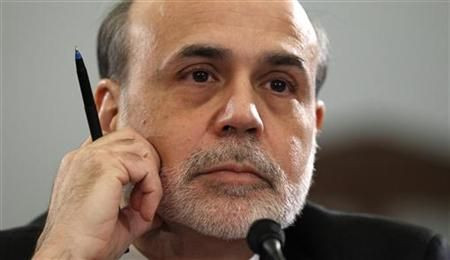Market Correction and the End of QE2

Tom Sowanick is Co-President and Chief Investment Officer of Omnivest Group in Princeton Junction, NJ.
Can the financial markets recover from their recent decline in the face of the end of QE2? We believe that the answer is clearly “yes.”
Our opinion was recently reinforced by the latest release of the FOMC meeting minutes dated April 27.
With respect to the recent performance of financial markets, we believe that the market turndown is nothing more than a normal correction in a continued bull market move. During a correction phase, financial markets typically reverse their most recent price performance by 5-10 percent. With the exception of oil and silver, nearly all other financial markets declined well within the 5-10 percent range from recent highs.
For example, from the end of April to this past Tuesday, the S&P 500 Index declined 2.6 percent, small cap stocks declined 5.2 percent, emerging equity markets declined 6.01 percent, and developed equity markets declined by 4.49 percent.
Interest rates, as measured by Treasury yields, declined 5.18 percent in the 10-year sector and 9.29 percent in the 5-
year sector. Investment grade corporate bond yields fell by 3.09 percent and Muni yields fell by 3.97 percent.
However, silver declined nearly 30 percent from its recent peak, and oil fell by 15 percent. It is our contention that these larger declines were the result of the multiple changes in silver margin requirements and the one-time increase in the margin requirement for oil.
As a result, it is now quite unlikely that either silver or oil will surpass their recent peak prices.
The minutes of the April FOMC meeting did show a spirited debate on how the Federal Reserve should normalize its “stance and conduct” of monetary policy.
Moreover, the minutes revealed that the term “normalizing” was repeated seventeen times in the first six pages. Despite the difference of opinion concerning the exit strategy from a low rate environment to one of a steadily increasing rate environment, the overwhelming view was that the Fed was in no hurry to aggressively alter its stance on monetary policy.
In fact, the minutes were clear in stating that the Fed would begin to shrink its balance sheet before they started to raise interest rates. Even so, the minutes were quite clear in stating that the Fed would continue to reinvest its cash flow from interest and principal payments into like securities.
The end of QE2 simply means that the Fed will not actively continue to expand its balance sheet; instead it will maintain the size of its balance sheet for the foreseeable future. Thus by continuing to supply unusual amounts of liquidity, there is no
reason for investors to become defensive.
Consequently, with some form of quantitative easing expected to continue and perhaps through year-end, we would view market corrections as opportunities to add to risk assets. Global equities, commodities and foreign currencies remain much more appealing than debt instruments at this time.
© Copyright IBTimes 2024. All rights reserved.




















